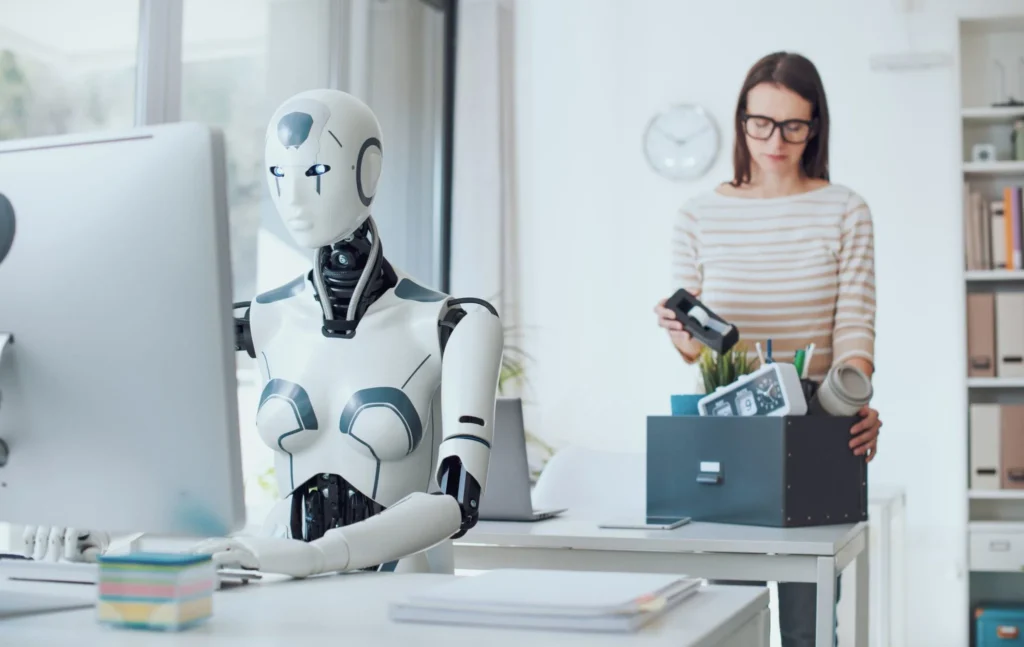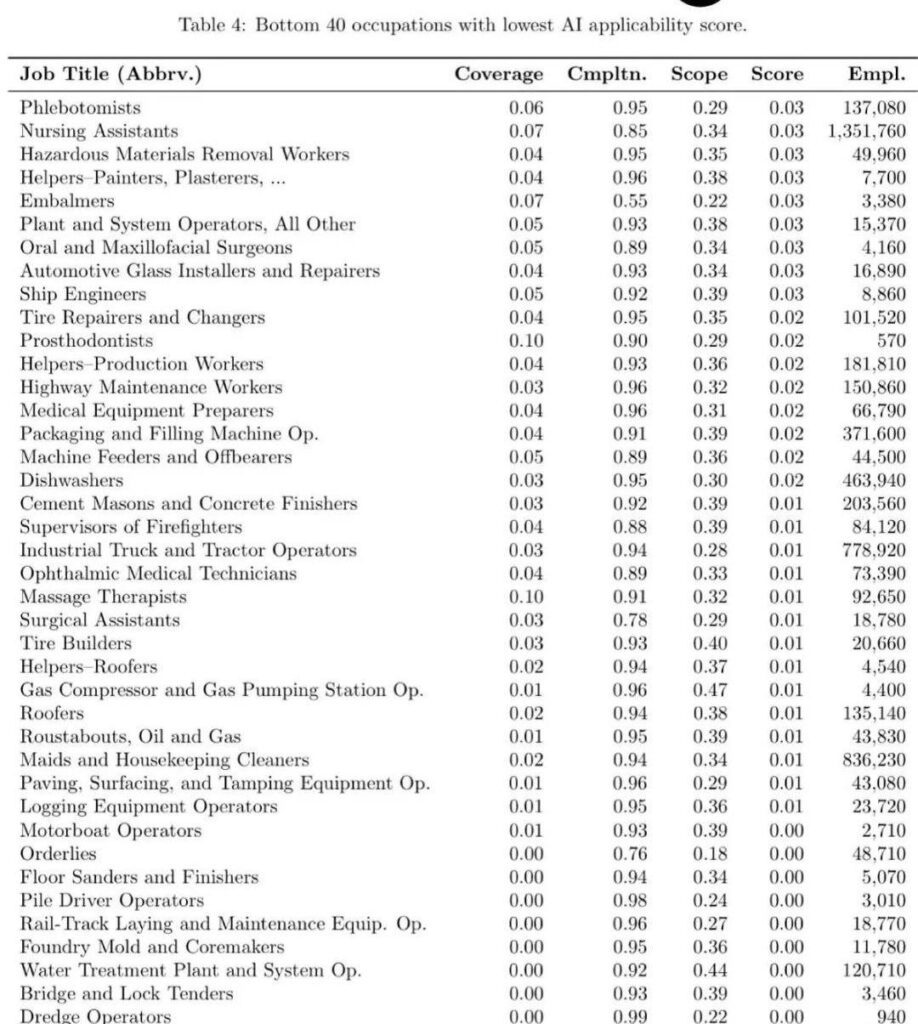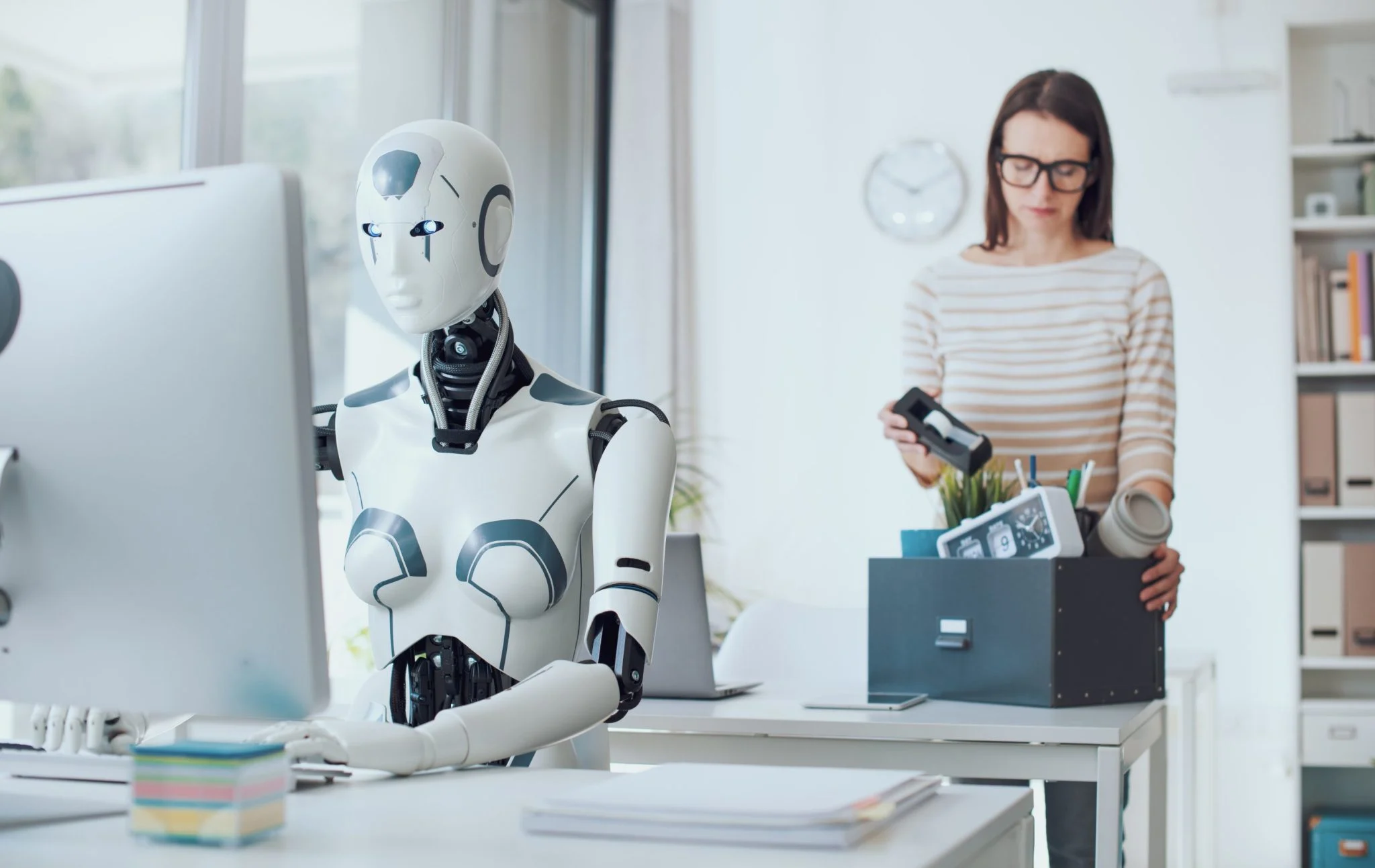


As artificial intelligence becomes more advanced, a common fear is that machines might soon replace humans in many jobs. From chatbots handling customer service to algorithms diagnosing diseases, the capabilities of AI are expanding fast. But according to a Microsoft-backed study, not all jobs are under threat. In fact, some are so human-centric that AI doesn’t stand a chance — at least not yet.
This study analyzed thousands of occupations and ranked them based on how applicable AI could be in performing their tasks. The result? A list of 40 jobs where AI has the lowest potential to take over. These are roles where human presence, decision-making, dexterity, care, or emotional connection is irreplaceable.
Let’s explore what kinds of jobs made this rare list.
Jobs That Need the Human Touch
At the top of the list are roles in healthcare and personal care. For example, Phlebotomists (the professionals who draw blood) and Nursing Assistants are two careers where AI cannot easily replicate the level of personal interaction, care, and physical skill required. Similarly, Massage Therapists, Orderlies, and Surgical Assistants rely on direct human touch, understanding of patient comfort, and emotional sensitivity — all areas where AI is far behind.
Jobs Involving Unstructured Environments
Next are roles that demand decision-making in unpredictable or unstructured environments. Take Hazardous Materials Removal Workers or Roofers — these professionals work in physically challenging, constantly changing spaces. AI might guide or assist, but it cannot climb a roof, sense danger instinctively, or improvise in a risky real-world environment.
Even Highway Maintenance Workers and Tire Builders appear on the list. Though machinery may support the work, the human judgment involved in repairs, safety checks, and adaptability is still essential.
Low AI Applicability: What the Score Means
In this study, each job was scored based on several AI-related metrics like:
- Coverage (how much of the job AI can cover)
- Complexity
- Scope
- Overall AI Applicability Score
Jobs like Dishwashers, Plant Operators, and Machine Feeders may seem repetitive, but even they scored extremely low for AI replacement, mostly due to task unpredictability, physical logistics, and cost of automating such roles in diverse settings.
Blue-Collar & Essential Jobs: Still in Human Hands
Interestingly, many of the jobs in the bottom 40 are blue-collar, manual, or essential service roles. These include:
- Cement Masons
- Truck and Tractor Operators
- Maids and Housekeepers
- Bridge and Lock Tenders
- Paving and Surfacing Operators
Despite being labor-intensive or “low-tech,” these roles often demand more than just brute force — they involve coordination, decision-making, and social awareness that current AI systems can’t replicate.

Understanding Why AI Fails to Replace These Jobs
The AI revolution is undeniably reshaping the global job market. But as the Microsoft study shows, there are clear boundaries to what artificial intelligence can do — especially when it comes to deeply human, physical, and emotional tasks.
Let’s break down the reasons why these 40 jobs are still safe from AI:
1. Emotional Intelligence Is Still Unmatched
Jobs like Nursing Assistants, Massage Therapists, and Orderlies involve constant interaction with people — often at their most vulnerable. These roles require:
- Emotional sensitivity
- Patient comfort and reassurance
- Real-time judgment in unpredictable emotional scenarios
AI can analyze text sentiment or simulate empathy, but it cannot feel, comfort, or respond to emotional cues in a truly human way.
2. Manual Dexterity in Real-World Settings
A large number of jobs on the list — Roofers, Cement Masons, Dishwashers, Pile Driver Operators — demand physical labor in dynamic, unstructured environments. These are settings where:
- Conditions change constantly (weather, surfaces, materials)
- Precision work is done with the human hand
- Real-world flexibility is essential
AI-powered machines may work well in controlled environments, but they struggle with field conditions where improvisation, instinct, and adaptability matter.
3. Limited AI “Coverage” and Scope
The study measured how much of a job’s tasks could be automated by AI — called Coverage. Most of these 40 jobs have a coverage score below 0.10 (10%), meaning:
“AI can only perform a small fraction of this role’s tasks.”
This includes roles like:
- Logging Equipment Operators (0.01)
- Bridge and Lock Tenders (0.00)
- Foundry Mold and Coremakers (0.00)
While robotics might support some physical labor, the core tasks of these jobs — navigating machinery, responding to failures, maintaining safety — still require skilled humans.
4. Low Cost-Effectiveness for Automation
Sometimes, even if automation is technically possible, it’s just not economically viable. Consider roles like:
- Dishwashers (over 463,000 employed in the U.S.)
- Housekeeping Cleaners (over 836,000)
Replacing all of these workers with robots would require:
- Massive investment
- High maintenance
- Constant error management
For many industries, hiring human labor remains cheaper, faster, and more efficient than automating low-margin service jobs.
5. Human Decision-Making in High-Stakes Fields
Even in high-risk, technical jobs — like Firefighter Supervisors, Ship Engineers, or Medical Equipment Preparers — the human ability to make decisions during uncertainty remains vital.
In crisis or emergency situations, contextual thinking matters far more than pre-trained AI models. These are moments when:
- Rules must be broken
- Lives are on the line
- Immediate improvisation is required
AI systems simply don’t have the intuition or accountability to perform in such critical roles.
Real-World Implications: Should We Rethink “AI Will Take All Jobs”?
This study challenges the simplistic fear that “AI will replace all jobs.” In reality, AI is more likely to:
- Replace tasks, not entire jobs
- Assist, not eliminate, human workers
- Augment productivity, not emotional or ethical decision-making
If anything, these findings reinforce the value of skilled trades, essential services, and caregiving professions — roles that often get overlooked in tech-focused conversations.
Key Takeaway: Humanity Still Has the Edge
While AI continues to grow in sophistication, it still lacks:
- Human empathy
- Physical adaptability
- Ethical judgment
- Contextual awareness
These traits are the heart of human labor, especially in the jobs listed by Microsoft’s study.
For now, and likely for decades to come, these 40 occupations remain AI-resistant strongholds.
Artificial intelligence is advancing rapidly, but some jobs still belong firmly in human hands. Roles that require emotional care, physical presence, real-time decision-making, or adaptability are not easily replaceable. The Microsoft study shows that despite technological progress, many occupations—especially in healthcare, manual labor, and essential services—continue to rely on human strengths. These findings remind us that while AI can assist, it cannot replace the core of human work.



